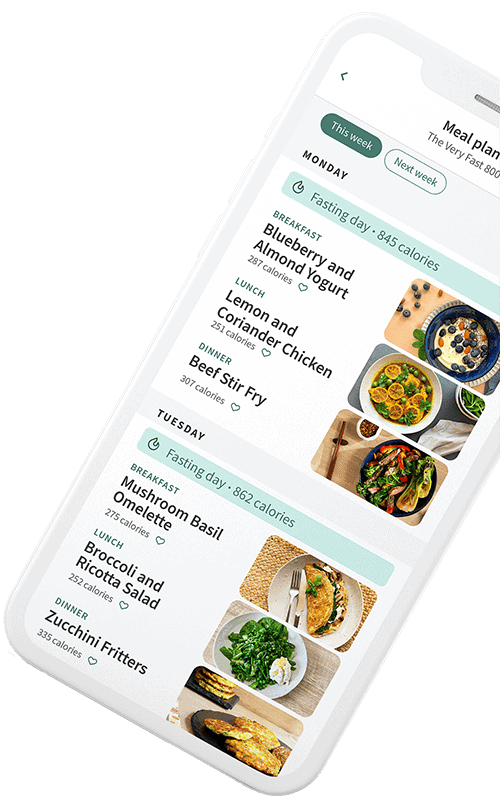Reset your routines
Instead of relying on willpower, base your diet plans for 2021 on something much more powerful: Resetting your routines.
Taking a good look at the scales just after Christmas is not for the faint-hearted. For those brave enough to face the numbers, the resultant shock can be enough to form a steely determination to renounce all junk food – forever!
The problem with determination, though, is that it is a limited resource. Life demands willpower from us in many domains beyond the kitchen. And as those demands build up, it is to that same place that we very often return, seeking safety and relief in food.
This is often a lifelong habit. As such, even the temporary shock of post-Christmas weight gain is enough to drive a change in habit for only a few weeks at most.
It need not be this way. A brand-new year is a time for optimism; a time for new starts, and better outcomes. Instead of relying on willpower, base your diet plans for 2021 on something much more powerful: Resetting your routines.
1. Reset your sugar cravings
Cut out sugar and refined carbohydrates
Keeping sugar and refined carbohydrates out of your diet is the first and most important step towards achieving a permanently healthy weight.
After many years of turning to plates of high-carb foods and sweet snacks to cope with the day, this can be a daunting prospect. The good news, though, is that there are some basic steps you can take to make this an achievable element of your day-to-day life.
- Choose whole grains, such as brown rice, quinoa, millet and spelt, rather than processed carbs such as bread and white rice. Pulses are another excellent source of complex carbohydrate.
- For the first meal of the day, eat a portion of protein-rich food. Studies have shown that this makes sugary food less tempting later on in the day.1
- If you feel tempted to eat a cake or a biscuit, have a low-calorie hot drink instead. A study conducted by the University of Colorado showed that simply holding a hot drink can make people more disposed to judge other people positively.2 With a friendlier view of the world, you are less likely to feel stressed – and so less likely to reach for the sugar.
- Snack on low-sugar fruits. Raspberries, strawberries, blackberries, apples and pears are all relatively low in sugar, and can be eaten safely in moderation. Remember though, fruit served at room temperature tastes much sweeter – so don’t eat it straight from the fridge!
Eat more plant-based food
By eating a diet that is based on fibre-rich unprocessed plants, rather than on refined carbs, you will prime your gut for a population of healthy gut bacteria – especially if you combine your veggies with live foods, such as kefir.
Good digestive bacteria work directly on the gut-brain pathway to increase your sense of wellbeing3, which will help to protect you against stress-induced sugar cravings.
In addition to fibre, a plant-rich diet is also full of anti-inflammatory and antioxidant compounds, both of which have been shown to counter low mood.4 Particularly beneficial foods include cruciferous vegetables, such as broccoli, bok choi and kale, as well as olives and olive oil, turmeric, and purple-skinned fruit.
Eat more omega-3 oils
Resetting your appetite to avoid sugar involves laying down new reward pathways in the brain, linking pleasure to healthier foods. A diet rich in omega-3 oils, particularly those of marine origin, helps to build and repair brain cells, as well as acting against inflammation in its own right. Try to eat two servings of oily fish each week or, if you are vegetarian, take a microalgae-based supplement.
Reset your eating schedule
To move back to a healthy weight and remain there, you need to reset not just what you eat, but when you eat it.
Led by Dr Satchin Panda of the world-renowned Salk Institute in San Diego, a number of researchers have found that by if the body enters a fasted state for twelve hours or more, it deploys a range of natural tissue-repair mechanisms that underpin lasting weight loss. Some eat for 12 hours, and fast for 12 hours; others take it further, and limit their time spent eating to 8 or even just 6 hours.
Done on a daily basis, Time-Restricted Eating, or TRE – as the practice has become known – has been shown not just to reduce insulin resistance, but to help reverse the effects of a sugar-rich diet.
In 2019, for example, a team of researchers at the University of California asked a group of 19 volunteers, the majority of whom were obese, to limit their eating to a regular 10-hour window over three months. To make sure that the experiment measured the effect of TRE and not of food eaten, participants were free to eat anything they wanted – provided they ate it within a 10-hour window.
The results were impressive. After three months, not only did the volunteers have lower insulin resistance, blood pressure, lowered cholesterol and lowered weight, they also lost an average of three per cent of their belly fat. The volunteers also reported better-quality sleep, and improved energy levels.5
Switching to TRE is beneficial, but it is a major step. In order to make a success of it, try these five tips:
- Extend the time that you spend away from food gradually. Day by day, eat breakfast an hour later and dinner an hour earlier until you have arrived at a food window that feels workable. Stay with this for a few weeks and then, if you want to, extend the window further – again, moving gradually.
- Because you will be consuming a normal amount of calories over 24 hours, it is essential to make sure that your non-food time is completely calorie-free. This means no snacks (not even healthy ones), and no milk in your tea or coffee.
- Keeping up your fluid intake, however, is important. Herbal tea can be an excellent accompaniment to a fast, and make sure you drink plenty of water.
- Avoid breaking your fast with food that contains the addictive food ratio of two parts carbs to one part fat. This is because after a prolonged period of not eating, the brain intensifies the reward felt upon tasting food: breaking open the hyper-addictive junk is asking for trouble! Instead, have some slices of fresh fruit and a serving of protein food prepared in advance.
- Part of the beauty of TRE is that it can easily work around social commitments. If you know that you are going to have a big dinner with friends or family, by extending your prior fast you can move your “eating window” to cover the time spent eating out. Also, don’t feel that you have to practice TRE every day of the week. Some people find that practicing TRE Monday to Friday works well for them, and then they can be more flexible with their eating windows over the weekend.
Reset your exercise routine
You should begin to feel the benefits of your new food routine within just a few days of starting out. Exercise acts even more quickly to reset your body, increasing insulin response after just one training session.6
If you are not in the habit of exercising enough, though, it is likely that you have some negative expectations of exercise. Now is the time to reset them.
- Incidental exercise, which means exercise that forms part of your normal day, rather than part of a focused workout, is an excellent place to begin rebuilding a more positive relationship with exercise. Try taking the stairs instead of the lift, and walking or cycling all journeys of less than a mile. If you commute, try finishing your journey one street or stop short of your final destination, and walk the rest of the way.
- If you feel self-conscious about your body, remember – Lycra is certainly not obligatory. With the appearance on the fashion scene of the “athleisure” look, it’s easy to find loose-fitting clothes that can be worn either to exercise or to relax, and which are often cut to look good on anyone. Treat yourself!
- To turbo-charge your insulin response, try high-intensity interval training (HIIT). A growing body of research shows that by interspersing continuous moderate-intensity exercise with short bursts of high-intensity activity, it is possible to regain a healthy insulin response within a much shorter time-period than that required when training at moderate intensity only: handy if you have a busy lifestyle (6).
Reset your routines for 2021: The one-minute take
Each year, thousands of people reset their appetite, and by doing so, reset their weight – for life. To make this the year that you find your healthier self and keep hold of it, three steps are all you need to take:
1. Reset your diet
Cut out sugar and refined carbs, eat more plant-based and live foods, and ensure that you consume adequate omega-3 oils.
2. Reset your meal schedule
Move gradually to a TRE pattern that works for you, plan ahead to allow for social events, stay hydrated, and keep junk food out of sight when breaking your fast.
3. Reset your relationship with exercise
Add incidental exercise to your day, ensure that you exercise in a way (and in clothes) that make you feel comfortable, and try HIIT.
By resetting your insulin response, you can ensure that this New Year marks the final time you will ever look down at the scales and not like what you see.
And when the holidays come around again in a year’s time, you’ll be astonished not just at how you’re still in good shape, but at how much more choice you have over what you want to eat.









